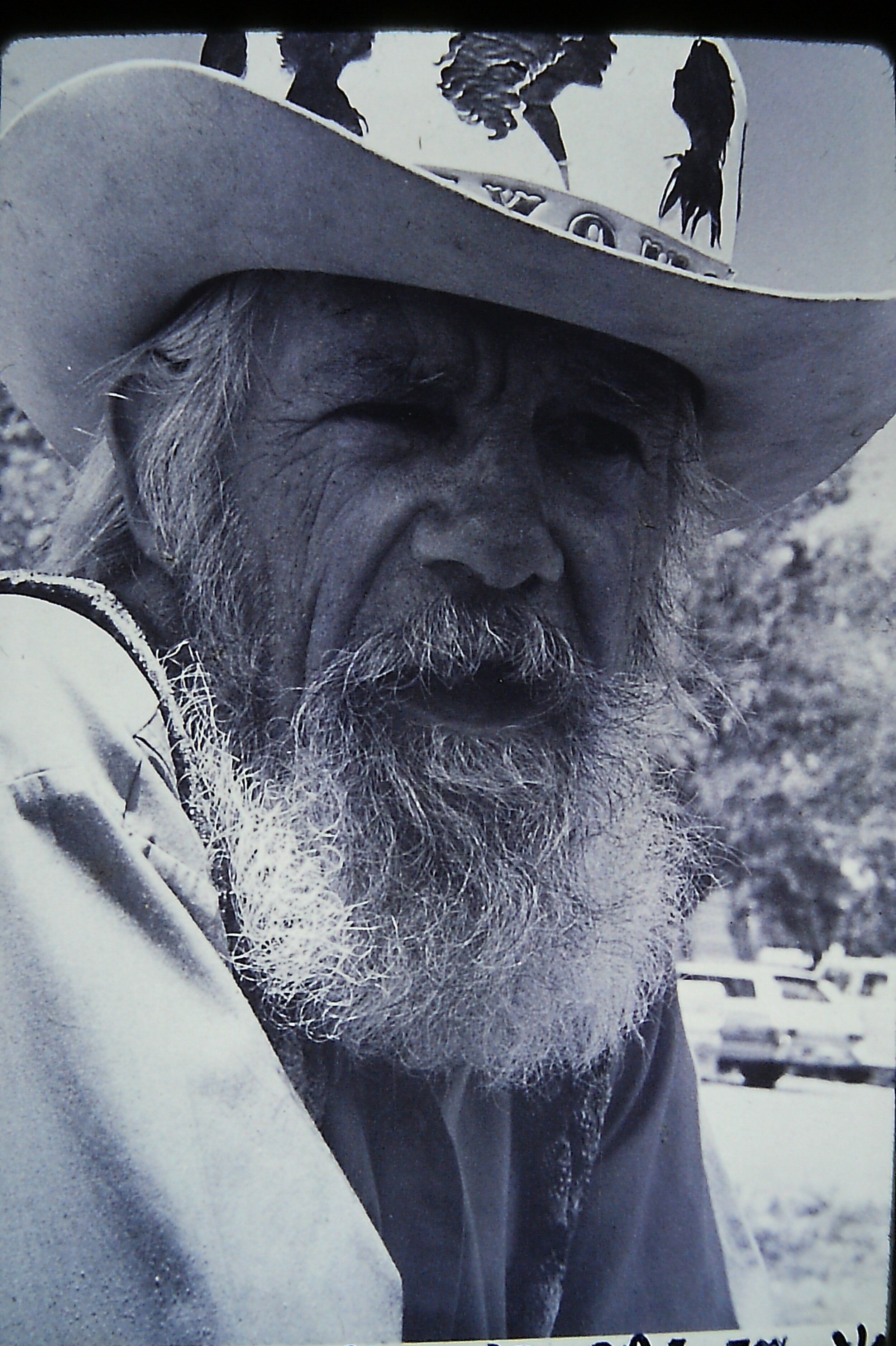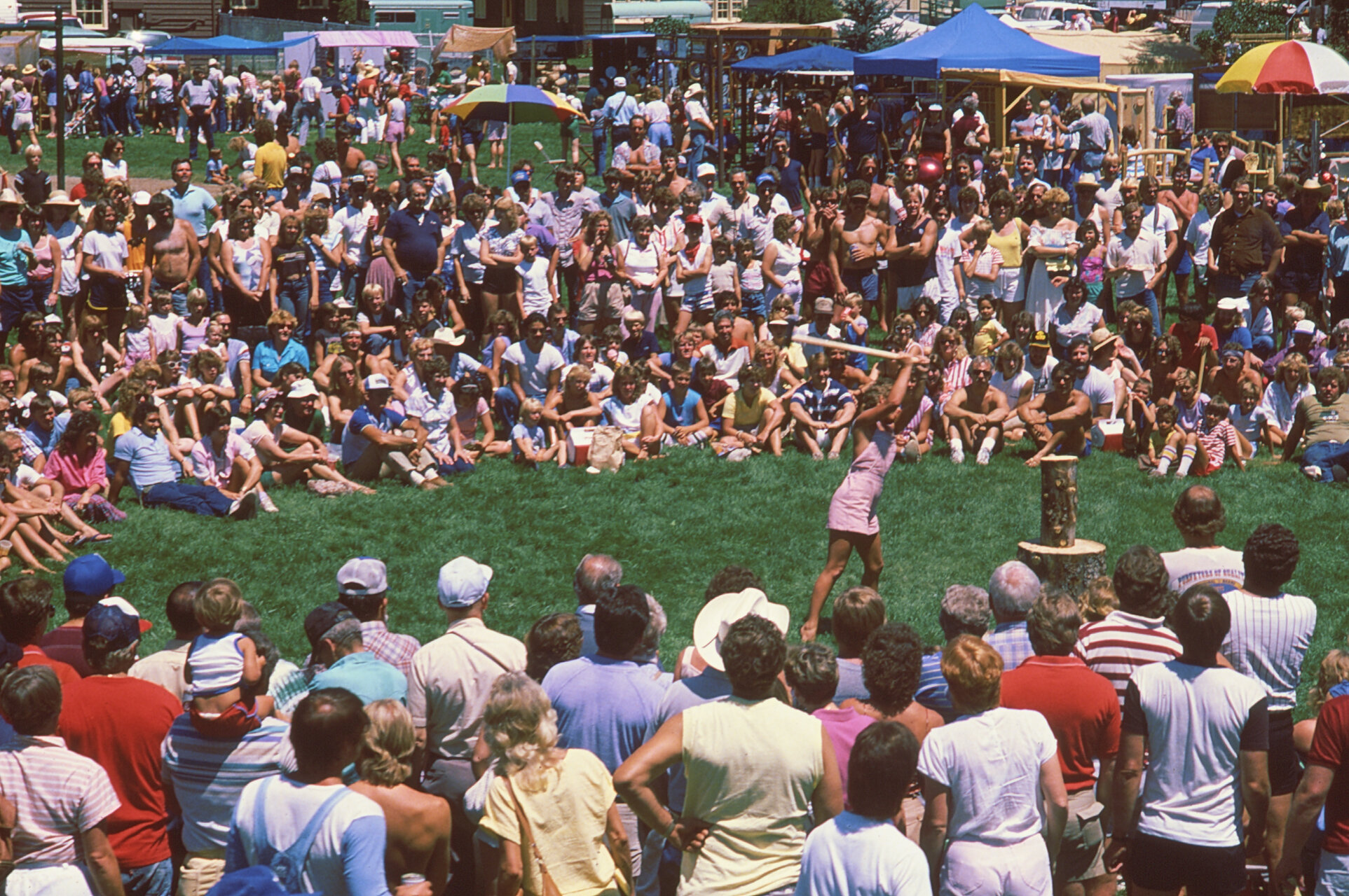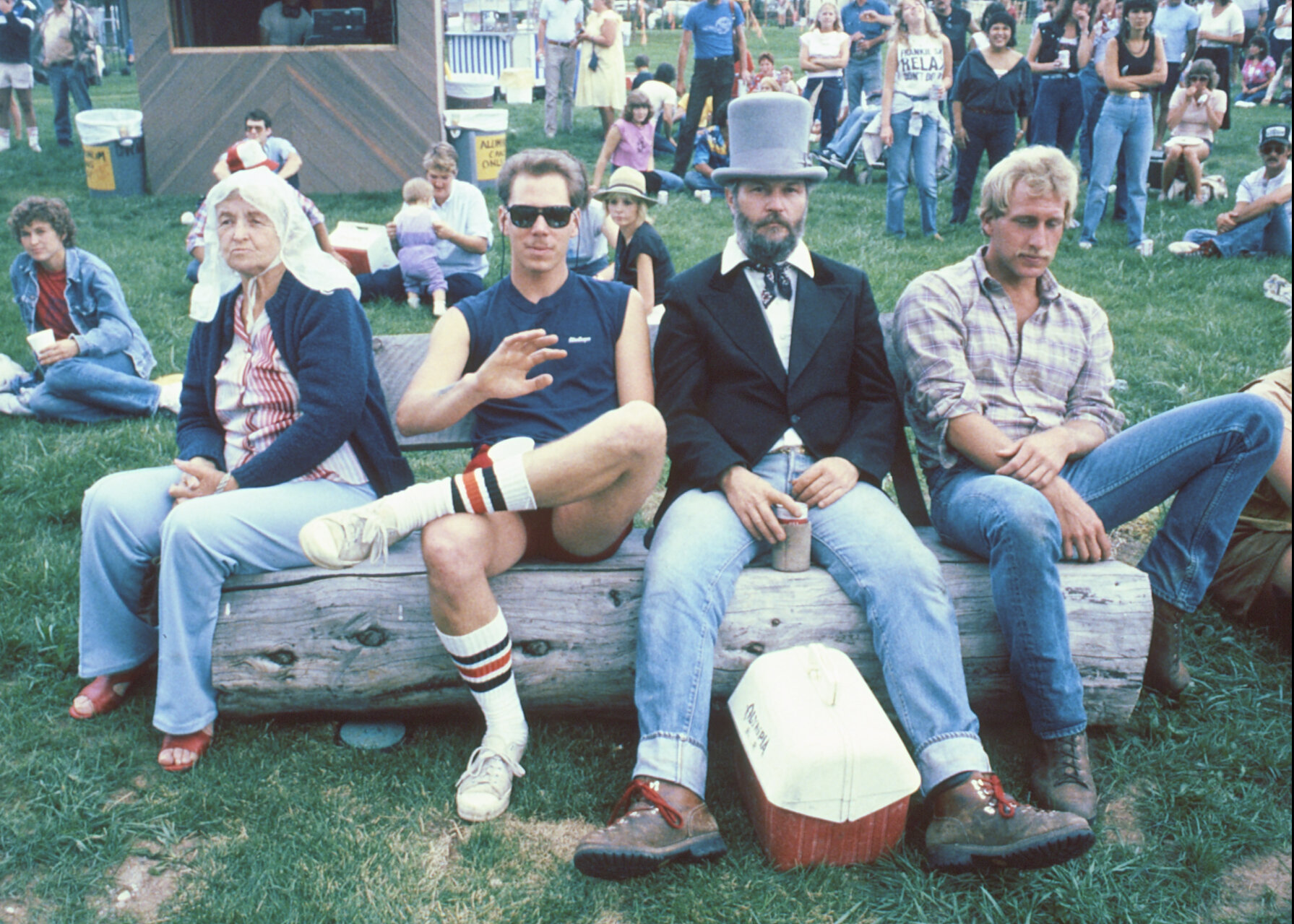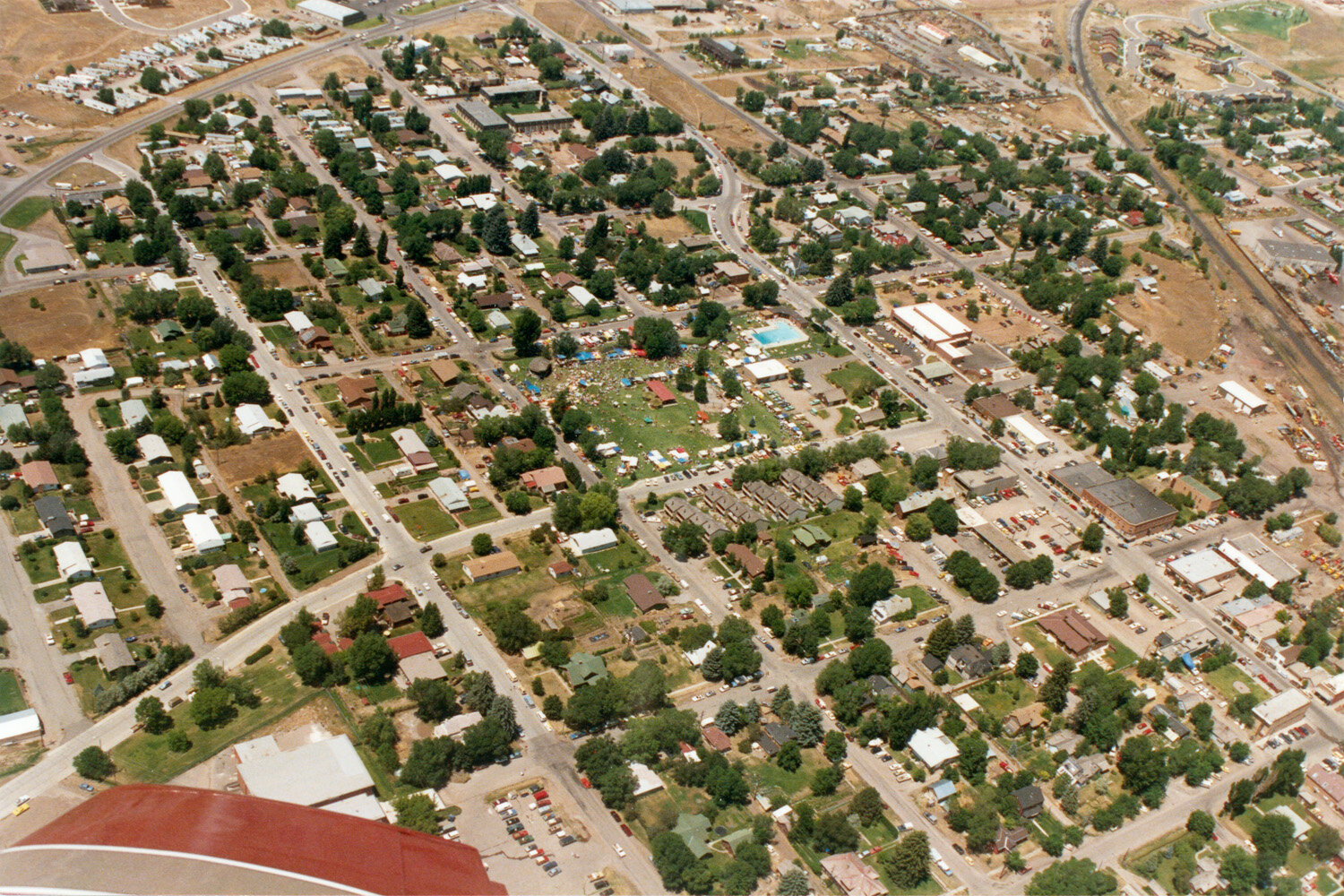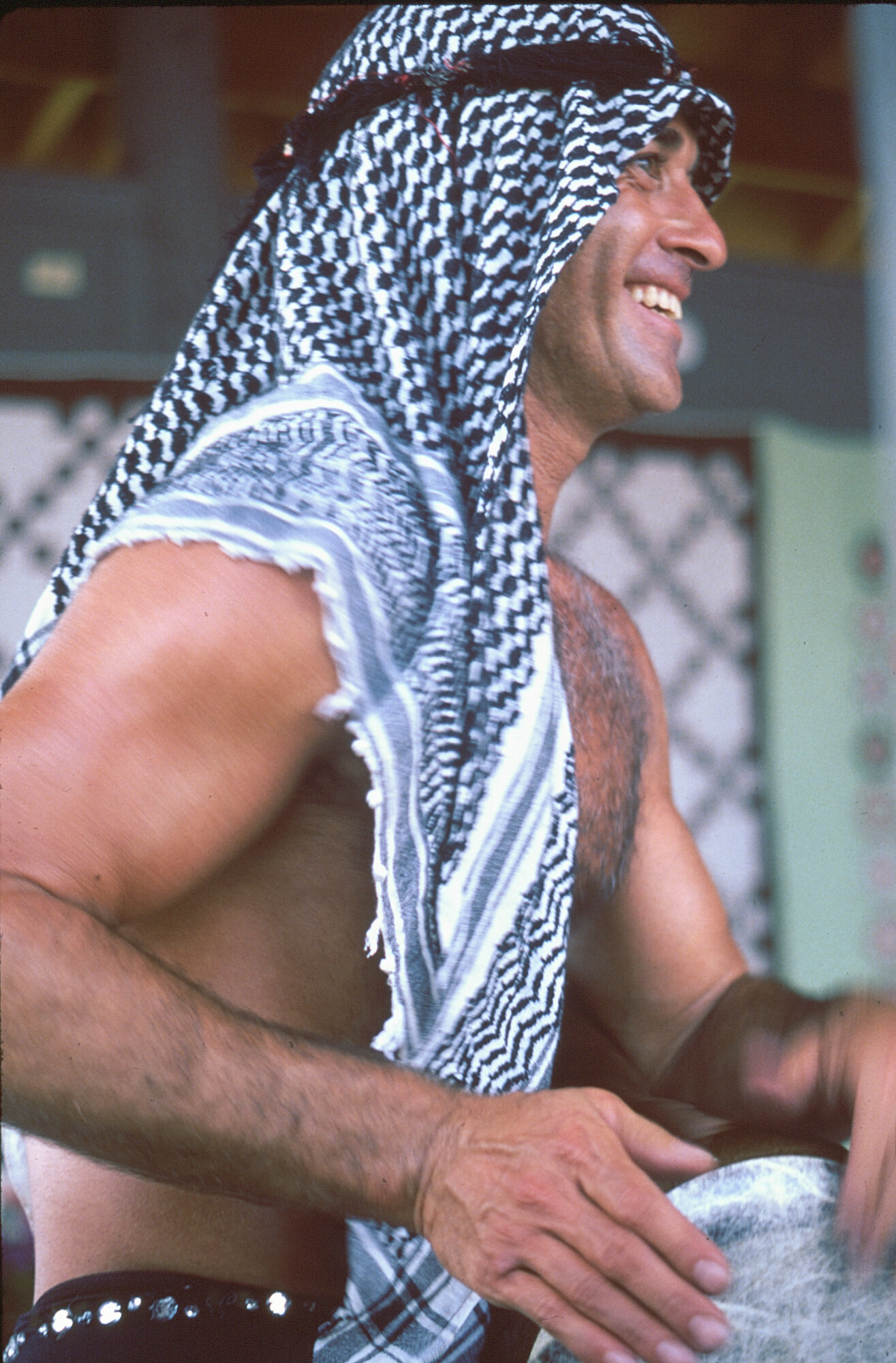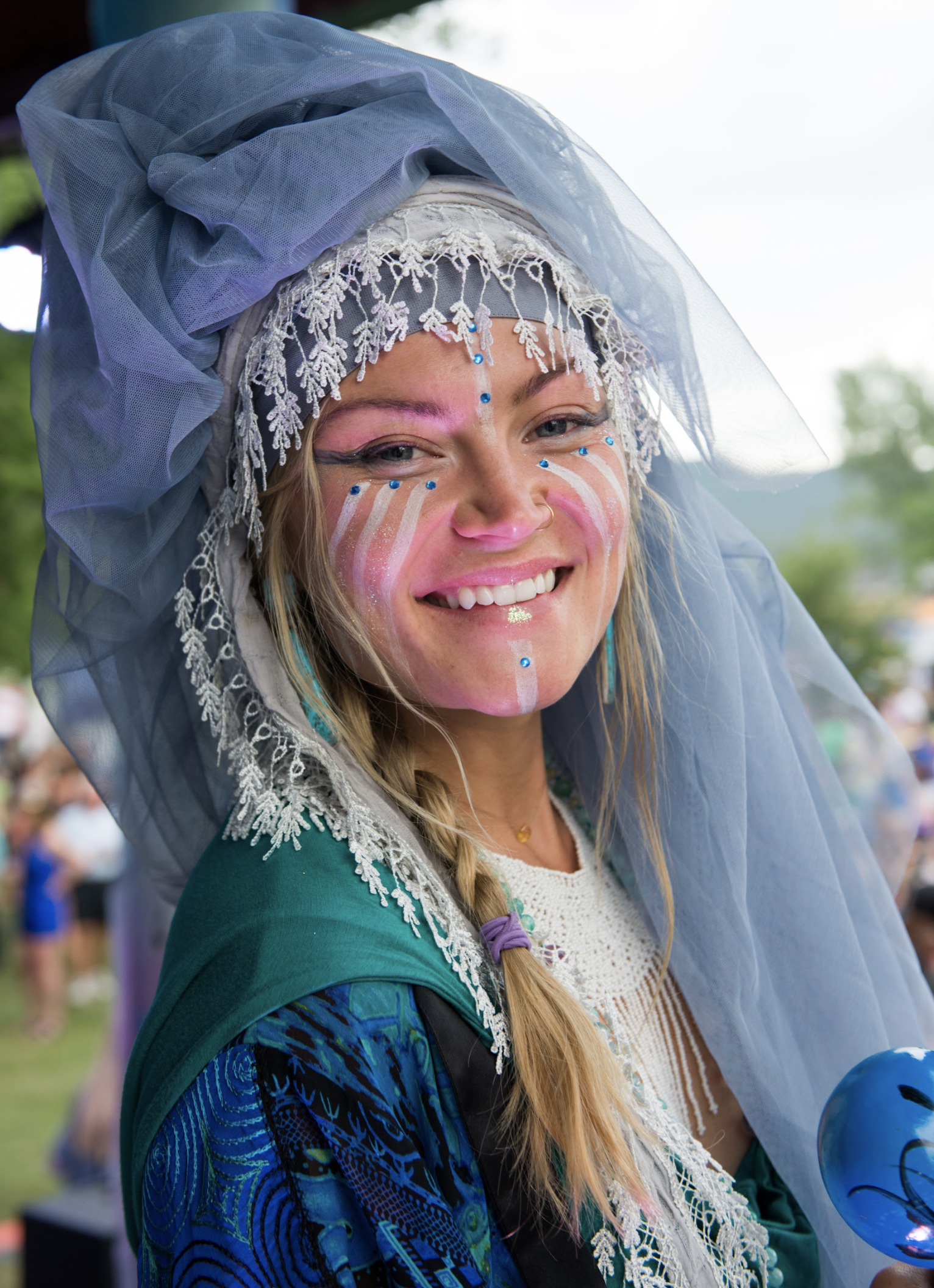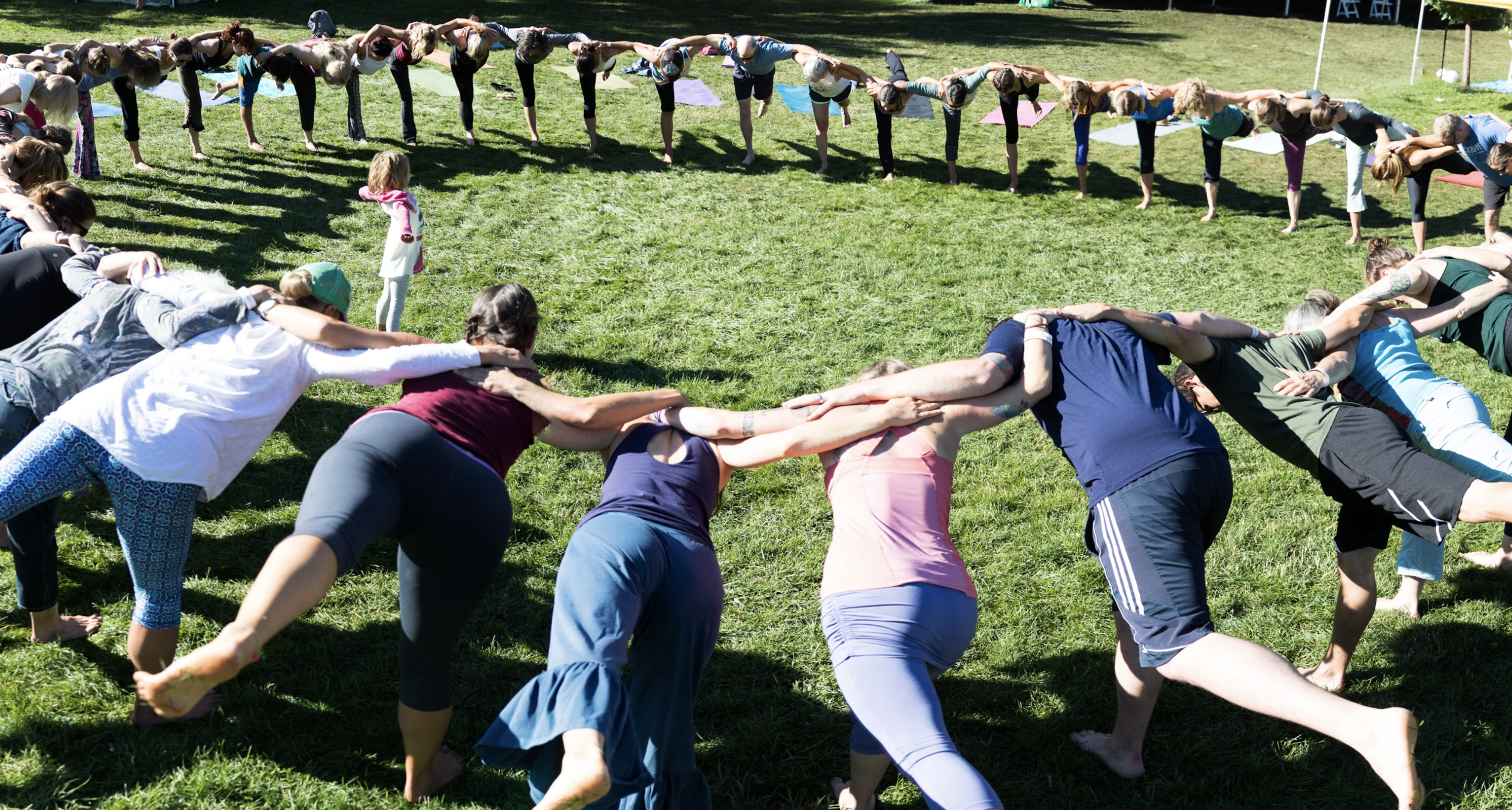
A Carbondale Icon
Since 1971
A Summertime Tradition
What makes a place what it is? What traditions and rituals play into the soul of community. How can one discern between important traditions that pass from generation to generation and ones that need to be broken? The story of the Carbondale Mountain Fair is one that answers these questions and shows that, while our world is changing quickly, some things are important to retain, honor and pass on. Carbondale is Ute Country. If we are smart, we will continue to learn from our original people. Theirs was a way of life that looks at the greater good, honors mother earth and passes on tribal ethos from generation to generation. And that’s how our story begins.
Laurie Loeb, “Mother of the Fair” 1970s.
It’s 1972 and Laurie Loeb, now known as “Mother of the Fair,” gathers a group of Carbondale community members to emulate a traveling Chautauqua that had passed through the year before. These folks created the Carbondale Mountain Fair. Present at that meeting: Laurie Loeb, Peggy DeVilbiss, Richie Marks, Wick Moses and others.
Entertainment becomes a priority in 1973. Local carpenters come together to build a temporary stage in the park every year, “borrowing” wood from their respective job sites.
The first fair features several local arts booths and the ever famous gyro booth run by the CRMS kitchen supervisor, John Gorman. The population of Carbondale is 650, the number of attendees: 800.
Carbondale is going through changes as more hippies and ski bums are displaced down valley from Aspen to Carbondale, primarily a ranching and mining community. Old timers are suspicious of this new population. The Carbondale Mountain Fair brings together these diverse groups and begins bridging gaps. The fair grows quickly.
The Carbondale Council on Arts and Humanities forms in 1974 (now Carbondale Arts) from funds raised at the Fair. Their mission provides arts programming in Carbondale year round. Laurie Loeb becomes the first director.
Competitions enter the picture. The wheel barrow race starts in 1975 and the pie contest in 1976. The slideshow begins with the help of Jim Ryan and others in 1975, who would take photos all weekend, rush the film to Aspen for development and run the show as the closing event of the Fair on Sunday evening. Locals to grace the stage in these years include: John Robin Sutherland, Ron Robertson, Ophelia Swing Band and Richie Marx. Watch the commemorative slideshow from the 50th and 40th Fairs.
Mountain Fair, 1978
The Pie Contest began in 1976, Ethel Saunders is named first winner. Watch a video on what makes this still-standing contest so special.
Gwen Hansen takes over as Fair Director in 1979. Other Fair Directors include: Claudia Bach (1980/81), Sheri Draper(1982), Ron Geering (1983), Joanne Ricci (1984/85) and Linda Halloran (1986).
Woodsplitting, 1980s
The fair becomes a true community collaboration. Everyone brings the best that they are. Barb Bush and Bill Bullard build benches for all to sit on, Howard Berkman dominates the stage, competitions grow to include The Mt. Sopris Runoff, Horseshoes and Greased Pole Climb (1979) and Limbo. Woodspitting joins in 1980. Dr. Limbo’s Medicine Show infiltrates entertainment and Mabel Macdonald brings belly dancing to the stage(and maybe even Conan)
The early 80’s also sees the start of the Oasis, then known as Buskers Hall, the ten-year anniversary and beginning of the raffle (1981). The Friend of Fair t-shirt is introduced (1981) for the growing number of fair volunteers. A permanent stage is built with funds from a memorial fund in honor of avid Fair dancer, Ben Reed (1984). The overnight security “A Team”, consists of Ray Adams, Robin Sutherland and John Colson. Vendors expand but liquor is still a free for all. Kegs and coolers filled with booze are regularly rolled into Mountain Fair, as there is no open container law in place. The wild west reigns!
Mountain Fair Limbo, 1980s
Thomas Lawley takes over as Fair Director in 1987. He plants trees in Sopris Park, one for each year of the Fair, builds a playground and gives the backstage area a considerable upgrade. The Silent Auction is added (1987) and CCAH receives The Governor's Leadership in the Arts award (1990). Thomas oversees both the Fair and the arts council. The 20th Annual Fair includes Leftover Salmon, Chris Bank, Larry Good and kazoos! A new rainbow entry way for Weant Blvd. & Main St. is sewn by Nancy Clough with Bill Morrow and Paula Lawley (1991). KDNK Community Radio begins The Cantina in the early 90’s. Police Chief Fred Williams says “that’s the best improvement this fair can make, to ensure longevity”.
Former Fair Director, Thomas Lawley and his wife Paula.
Fairgoers drinking from Coca-Cola cups, the only commercial sponsor of the event, until 2006
The Fair continues growing but refuses to display sponsor banners or any commercial and financial donors. It is the Fair by the people, for the people. Volunteerism lays at the heart of its success and uniqueness. CCAH makes money by selling Coca-Cola which causes lots of consternation amongst the Mountain Fair board because their logo was on every cup!
Often mentioned is the electrical phenomena that occurs in 1995 as a visible ball of electricity surges down the power lines surrounding Sopris Park and creates a spectacular power outage. This outage birthed the infamous drum circle which still starts the Fair today. It also inspired Fred “Lightning Heart” Haberlein to get involved, blessing the Fair each year from 1996 till his death in 2018. The Fair begins to “go green” with the help of Spaff Ackerly and Cacaloco, a local composting effort by Jim Duke. Fairgoers are encouraged to bring their own plates and utensils.
Fred “Lightning Heart” Haberlein cools the crowd, 2017.
Mountain Fair opens each year with the infamous community drum circle, 2016. Photo by Eric Allen.
From the left: Ro Mead & Amy Kimberly, 2005. From Aspen Times article “Mountain Fair: Bigger, better and profitable too”
A falling out between CCAH and KDNK occurs in 2001, splitting the community. The disruption is caused over the Cantina proceeds, which have expanded. CCAH now controls the Cantina and keeps the proceeds but loses some community support. Still the Fair grows and several generations now share volunteer duties. Ilene Pevec takes over as Fair Director in 2003 but resigns before the year is out. Ro Mead becomes Director of CCAH and Amy Kimberly takes the helm of the Fair in 2004. As Amy works for both CCAH and KDNK, she helps mend the disagreement between the two, bringing KDNK back into the Cantina fold by spreading shifts amongst nonprofits who apply for a shift and keep the proceeds.
Marianne Ackerman is hired as Vendor Liaison from 2012-2018 then passes the torch to Alta Otto. The Green Team kicks into high gear with Jason White and Mark Weinhold in 2006 by introducing composting and recycling education practices. Amy and Mark Taylor oversee all aspects of the Fair through 2021 and bring in music of all genres.
The 40th Mountain Fair brings many folks together in 2011, young and old, children of children and different cultures to celebrate the community it creates year after year. Big issues these days are switching up the pie judges (the next generation wants to freshen it up but the old timers hold onto their judging status and rear up in rebellion), local craft beer vs. state craft beer, reuse of cups in The Cantina, keeping our LatinX community engaged and getting the next generation ready to take over. Magical moments continue under the watchful gaze of Mother Mountain Sopris.
Artwork by John Toly, 2011
The second decade of the new millennium brings the next generation of community into the Fair. James Gorman begins learning production and Deborah Colley acquires and organizes all the years of institutional knowledge. Thomas Lawley passes in February of 2019.
Many changes happen in the world between the 40th and 50th years, most notably the COVID-19 pandemic, which makes the 49th Fair far from traditional, but the spirit of the Fair lives on through a live broadcast opening blessing by Eaden Shantay, a mobile drum circle and musical acts traveling through Carbondale neighborhoods on a flatbed trailer. About 20 vendors set up in a small grass lot in downtown, including the T-shirt booth, shirts are also available online for the first time, grossing $35k in supportive sales! While many of the standard events and competitions are put on hold, a new addition, The Worstminster Dog Show is created by Jane Bachrach. There was even a rainbow, every single night.
While the 49th Fair left everyone more nostalgic than ever, rainbows were cast every single night, 2020
Dancers take the stage, 2016
Amy Kimberly is honored as the longest running Fair director (18 years) at the 50th Fair, 2021.
The 50th Carbondale Mountain Fair footprint expands, taking place in Sopris Park, on Main Street, in the grass lot and on a flatbed truck. It is the biggest fair yet, despite the pandemic. Playing up the Fair’s golden anniversary the crowd glimmers and shines. Over 300 volunteers make it happen. A tug-o’-war is reintroduced between the firemen and policemen and all competitions take place. Fair favorites like The Motet, Band Of Heathens, The Tierro Band with Bridget Law, and The ReMinders perform. Everybody hugs like there is no pandemic and there is no indication of a spike in cases afterward. It is noted that long-time volunteer Emmet Garcelon, 14, will be Amy’s age (65) at the 100th Carbondale Mountain Fair.
The Motet returns to Mountain Fair to headline Saturday night, 2021
2022 is a big year for the Mountain Fair leadership team. Deborah Colley takes the reins of the Chief of Operations role accompanied by James Gorman as Head of Productions and Aly Sanguily as the Entertainment Conductor. More still, Amy Kimberly retires as Executive Director of Carbondale Arts, and Jamie Abbott takes the helm of the organization. Alta Otto steps down as Vendor Liaison and Staci Dickerson assumes the role.
In 2023 the Fair is packed back into Sopris Park, which is bursting at the seams. Paired with a renovation to the town pool, which enveloped space used for the family Oasis area, there is ultimately no choice but to expand the Fair footprint once again, and indefinitely, onto Main Street. 2024 introduces a reimagined Oasis Family Block Party along Main Street expanding offerings to young Fairgoers and increasing business vitality in the downtown core.

Creating a Time Capsule
Artwork by Larry Day
“50 Years of Fair”
The Carbondale Arts gallery hosted a massive time capsule exhibit in honor of the this momentous milestone. Looking back on the decades of photos and stories brought tears to people’s eyes as they visited. Several members of the community leant their treasures and memorabilia from Fairs past, and local long-time photographers brought shoeboxes and reels full of slides so we could display the best of the best. It takes a village to put on The Fair each year, and this exhibit was no different, we are truly grateful for everyone that contributed. A special thank you to Terry Glasenapp for your years of Fair documentation and archive organizing.
An entire wall of the exhibit featured all 50 years of winning designs either on poster or T-shirt (see the 50th design to the left). Several videos were compiled of Fair highlights and played on a large screen in front of a cozy living room vignette with scrapbooks on the coffee table.
Terry Glasenapp (right) with former Mtn. Fair Director, Thomas Lawley, 2016
A special thank you to Terry Glasenapp for years of archiving dedication. He was able to offer all sorts of memorabilia for the exhibit and created a video mash-up of Fair’s past. View Terry’s compilation of Fair documentation over the years.
For the Community, by the Community. Since the Beginning.
Podcast with KDNK
Community public radio station, KDNK (88.1FM), has been an integral partner of Mountain Fair since the mid ‘80s. Through the ups and downs, we can’t imagine a Mountain Fair without them and their support. Each year they do a live broadcast of The Fair, so you don’t have to miss a thing!
A very special thank you to KDNK DJ, and Mountain Fair veteran Luke Nestler, for digging through the archives and conducting several interviews with key players and creators of The Fair to bring this podcast to life. Resurfacing cherished music and memories, these episodes truly encapsulate the spirit of Mountain Fair.
































